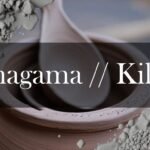Imagine standing before a Noborigama kiln, a majestic structure climbing the hillside, its multiple chambers promising a symphony of fire and transformation. These traditional Japanese kilns, also known as climbing kilns, are not just tools but monuments to the potter’s craft, embodying centuries of innovation and community. Understanding their construction, firing techniques, and maintenance is key to appreciating their significance and harnessing their potential. You might also want to read about kiln care to make sure your kiln lasts.
The noborigama, with its origins in China, arrived in Japan via Korea in the 17th century, revolutionizing ceramic production. Its ingenious design utilizes a series of interconnected chambers ascending a slope, where each chamber is linked to the one above by flue holes, allowing for sequential firing uphill. This layout maximizes heat retention, using the heat from one chamber to preheat the next, drastically reducing fuel consumption and allowing for continuous firing and increased production. The materials used in construction are carefully chosen to withstand the extreme temperatures. Fire bricks, marked with an “SK” followed by a number indicating heat resistance, form the inner layers, while softer tonbai bricks are used for areas needing modification. The kiln floor, walls, and arched ceiling are meticulously built to ensure durability and insulation, while the chimney’s height and cross-sectional area are precisely calculated to optimize airflow. For those looking to delve deeper, resources like “Building Your Own Kiln: Three Japanese Potters Give Step-By-Step Instructions” offer invaluable guidance with detailed diagrams and photographs. The noborigama’s design enabled the mass production of styles like Oribe ware. The kiln’s efficiency facilitated the mass production of Oribe ware, maintaining consistent high temperatures crucial for achieving the characteristic glazes. Learn more about Oribe ware.
“The Noborigama, with its multiple chambers and ascending design, represents a pinnacle of ceramic engineering, enabling potters to achieve unparalleled control over the firing process and produce works of remarkable beauty and complexity.”
Firing a Noborigama kiln is a labor of love, often involving the collective effort of a community. The firing process can last for days, with continuous stoking and monitoring to maintain the desired temperature curve. Fuel management is crucial, with different types of wood, such as oak, cedar, and pine, carefully selected and prepared to achieve specific aesthetic results. The front chamber, closest to the firebox, often produces pieces with thick ash deposits and unique textures, while subsequent chambers offer a spectrum of finishes, from heavy ash to more subdued surfaces. The Noborigama kiln in Miyazaki village, Echizen, Japan, is fired once a year due to its large capacity and the extensive labor involved. The firing spans three days and nights, reaching temperatures up to 1280°C. To read more about it, check out this blog post. Introducing salt into specific chambers can create a salt glaze effect, adding another layer of complexity and beauty to the finished pieces. Learn more about salt glazing in pottery.
- Careful fuel management.
- Continuous stoking and monitoring.
- Community effort.
These are all things needed for a successful firing of a Noborigama kiln. It requires great care and effort to achieve the desired result.
Maintaining a Noborigama kiln is essential for its longevity and optimal performance. Routine maintenance includes post-firing inspections and cleaning to remove debris and glaze drips. Periodic checks of electrical components, wiring, and structural integrity are also vital. Common repair issues include element wear and failure, brick damage, and electrical problems. Regular monitoring, professional inspections, and environmental control are best practices for ensuring the kiln’s longevity. The kiln’s interior should be inspected for glaze drips, clay chips, or any debris that could melt at high temperatures, and these contaminants should be removed to prevent damage. Here you can read more about kiln maintenance. By diligently caring for your Noborigama kiln, you can ensure that it continues to fire beautiful ceramics for generations to come.





